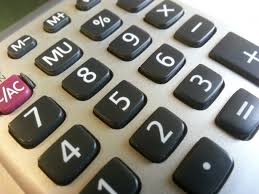 Why is it difficult for me to reduce my electricity bill? There are two components to your electricity bill. One is the supply charge which covers the infrastructure such as poles and wires and the other one reflects the amount of electricity that you use.
Why is it difficult for me to reduce my electricity bill? There are two components to your electricity bill. One is the supply charge which covers the infrastructure such as poles and wires and the other one reflects the amount of electricity that you use.
Even if you keep a tab on the cost per ton of coal you will see that it has very little bearing on the amount you get charged for the electricity supplied and consumed.
Even if the wholesale price of coal is halved, it will have very little effect on reducing the amount you get charged, if any at all, because it is only one very small factor involved in the production, management and delivery costs of electricity you use.
If you have a look at your current electricity bill you will see that there is a daily charge
for supply. It is to cover the cost per day to have the convenience of electricity at the
flick of a switch whether you use it or not >>>> LEARN MORE >>>>
If you go on holidays for a month, the daily charge keeps adding up regardless of whether you consume any electricity at all. For some people who have electricity bills in the order of $800 to $1,000 per year, the supply charge can be as much as 50% of the bill or even more in some cases.
Even if you could Savvy up and organise yourself to only use half as much electricity as you do now, your bill will not even be reduced by 25%. How can this be? For people who have quarterly bills in the order of $200, it is more difficult to significantly reduce the bills by being more frugal with electricity. Those bigger consumers who use $600 to $800 worth of electricity per quarter, the daily supply charge is still the same but represents a much smaller percentage of the overall bill.
Becoming more energy wise can have an impact on the quarterly bill in those circumstances however when you consider that energy resellers advertise semi-regularly that they can reduce your electricity costs per kWh by 40%, you have to ask yourself how much “fat”, that is, how much profit is in this for the energy resellers.
The people whose bills are in the order of $200 a quarter, are caught between a rock and a hard place because even putting solar panels on their homes, regardless of the “subsidy” available, the most they could save per year to pay off their panels would be $400. Even this is not a viable option for them because they still have to pay the supply charges which may be as much or even more than 50% of the bill.
Realistically speaking, this could never happen in the real world because the sun doesn’t shine at night so an interactive system could never supply 100% of a household’s electricity requirements.
 Until the cost of a kilowatt hour becomes exorbitant, which is clearly on the Australian horizon, lower end consumers will find it difficult to make a significant reduction in their electricity bills. Supply charges are fixed, unrelenting and nonnegotiable and profits for resellers, even though they claim as much as a 40% reduction in the cost of consumption; only represents one component of the remaining 50% of the costs.
Until the cost of a kilowatt hour becomes exorbitant, which is clearly on the Australian horizon, lower end consumers will find it difficult to make a significant reduction in their electricity bills. Supply charges are fixed, unrelenting and nonnegotiable and profits for resellers, even though they claim as much as a 40% reduction in the cost of consumption; only represents one component of the remaining 50% of the costs.
So the heads up for the aged pensioners rugged up and shivering in a cold home in the winter time or uncomfortably hot in the summertime, taking the edge off these extreme conditions by using a little more electricity is not going to impact your bill significantly.
Everyone’s situation is different and depends on a lifestyle, their typical consumption habits and the thermal performance of the home they live in. Unfortunately in our modern world every commodity, including essential energy, will always be sold for whatever the market will bear.
The supply of energy is no longer a service in the true sense of the word but is indeed determined to be a desirable and valuable commodity with eager consumers with very little bargaining power or options.
Things may get better but the second law of thermodynamics is alive and well in the corporate world. If you are a lower end consumer, put the jug on and have another cup of coffee if you feel like it because the few Wh’s you will consume to boil enough water to fill two cups will have very little impact on the cost of your quarterly bill.
John Lynn
Suburban Off Grid Living
